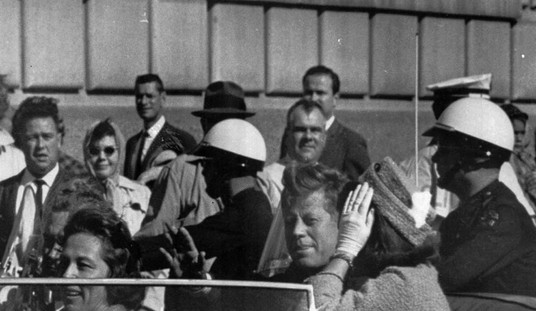For a five-year old boy, there are few events in life that can bring such sublime flights of anticipation as Halloween. Yes, Christmas is up there, with the season’s lights and decorations and promise of long-wished-for presents. And birthdays, too, have their attractions. Along with the gifts comes the advantage of being an entire year older, and what five-year-old boy doesn’t dream of finally attaining the maturity and exalted status of a six-year-old.
Aaron Shannon Jr. won’t see his sixth birthday. On the afternoon of Halloween, as he counted down the minutes to nightfall and the adventure of trick-or-treating, he was shot and killed in his backyard. He was wearing his Spider-Man costume when he died.
Most parents fret over the hazards of Halloween: the strangers, the traffic, the effects of big sugar on little bellies. Few parents fret over the prospect of their child getting shot in the backyard. What kind of a place must it be where they do?
Such a place is the neighborhood around 84th Street and Central Avenue, in South Central Los Angeles, where Aaron lived and died.
A visitor to Los Angeles might arrive at LAX and drive east on Manchester Avenue for twenty minutes or so and then turn north on Central Avenue, where, miles in the distance straight ahead, he would see the gleaming steel and glass towers of downtown. On clear afternoons, as it was on Halloween, the setting sun reflects off those buildings to create a brilliant tableau, but the visitor would note that the scenery on either side of Central is far less spectacular: drab storefronts, modest apartment buildings, and a few neighborhood churches. The visitor wouldn’t detect any significant differences between the east side of the street and the west side.
But there is a huge difference, one that is well known to all who live and work in the area. Aaron lived on the west side of Central, in a neighborhood claimed by a particular street gang. Another street gang claims the territory to the east of Central, and when members of each gang cross that great divide into the other’s turf, they almost always do so in search of trouble.
Police claim that on the afternoon of Oct. 31, two members of the gang from the east side of Central Avenue crossed that invisible boundary hoping to settle the score for an earlier shooting. They walked down the alley behind Aaron’s house looking for targets and, on seeing people in a backyard, one of them raised a pistol and opened fire. Aaron’s grandfather and uncle were struck in an arm and a leg, respectively, and survived. Aaron, little Spider-Man, was shot in the head and never had a chance. Police say no one in the family belonged to a gang.
If you don’t live in Los Angeles — and perhaps even if you do — chances are you hadn’t heard what happened to Aaron Shannon Jr. But no matter where you live, if you follow the news at all you’ve surely heard of Oscar Grant, the man shot and killed in Oakland, California, by a BART police officer in the early morning of January 1, 2009. Grant’s death sparked rioting in Oakland, as did the outcome of the prosecution of the officer who shot him. Johannes Mehserle was charged with murder but a jury convicted him of involuntary manslaughter and he was sentenced to two years in prison.
Both the verdict and the sentence were well within the law and entirely foreseeable, yet they nonetheless brought outraged cries from those quarters where such cries have come to be expected. And accompanying the outraged cries were the looting and vandalism which, alas, have also come to be expected.
On Nov. 5, the day Mehserle was sentenced, demonstrators gathered outside the Criminal Courts Building in downtown Los Angeles (the trial had been moved from Alameda County on a defense motion for a change of venue). Many held signs adorned with a simple message: “I am Oscar Grant.”
If you were to listen to those who protested on behalf of Oscar Grant, you might have the impression that the greatest threat to any black man in Oakland — or Los Angeles or any city you choose — is posed by racist cops itching for an excuse to gun him down. But about seven people are murdered each month in Oakland, nearly all of them young black men shot by other young black men. And yet as those bodies pile up no one marches, no one shouts, no one seems outraged in the least by the carnage.
On Nov. 6, a candlelight vigil was held at the LAPD’s 77th Street police station in memory of Aaron. Less than a hundred people attended, judging from the brief video report shown on the local news. There was no screaming, no hysterics, not even calls for vengeance against the two men accused of killing Aaron. And there most certainly was no mob rushing off to the nearest Foot Locker store to help themselves to the latest models from Nike. And if the two men accused of murdering Aaron somehow manage to beat the case or bargain for a reduced sentence, that too will be greeted not with outrage but rather with sad resignation.
I don’t begrudge Oscar Grant and his family the sympathy they’ve received. His death was indeed tragic and, whatever his faults, he left behind people who loved him. But of all those people demonstrating outside the L.A. courthouse in his name, I doubt a single one of them could have told you who Aaron Shannon Jr. was.
And that’s something to scream about.










Join the conversation as a VIP Member